This article was co-authored by Erik Kramer, DO, MPH. Dr. Erik Kramer is a Board-Certified Primary Care Physician at the University of Colorado. With over 15 years of experience, his clinical interests include obesity and weight management, diabetes care, and preventive care, as well as embracing a holistic approach to primary care. He received his Doctorate in Osteopathic Medicine (D.O.) from the Touro University Nevada College of Osteopathic Medicine and completed his residency at Central Maine Medical Center. Dr. Kramer is a Diplomate of the American Board of Obesity Medicine.
There are 14 references cited in this article, which can be found at the bottom of the page.
wikiHow marks an article as reader-approved once it receives enough positive feedback. In this case, 100% of readers who voted found the article helpful, earning it our reader-approved status.
This article has been viewed 106,274 times.
Hypoglycemia, commonly referred to as "low blood sugar," occurs when the amount of glucose in the blood falls below normal levels. Glucose is an important source of energy for the body. When your blood sugar level is too low, your brain cells and muscles do not have enough energy to function properly. Hypoglycemia can occur as a consequence of diabetes or as a reaction to a specific food eaten (or when you don't eat enough). It often results from a sudden drop in blood sugar levels. It can usually be treated quickly by eating a small amount of food containing glucose as soon as possible. Left untreated, hypoglycemia can cause confusion, headaches, fainting, and in more severe cases, seizures, coma, and even death.
Steps
Preventing Low Blood Sugar
-
1Follow your doctor's instructions. Be sure to consistently follow your doctor’s instructions about medications, including insulin and other oral diabetes medications, on how to take them and when. Further, if your doctor has put you on a strict diet or you've consulted with a nutritionist or registered dietician, make a concerted effort to follow those dietary plans, which were designed precisely to avoid complications with your illness and to keep your blood sugar levels stabilized throughout the day.[1]
- Sometimes the best preventive medicine is to follow the rules and guidelines set by your primary healthcare practitioner.
-
2Test your blood sugar regularly. Individuals with diabetes are recommended to monitor their blood sugar at least once daily, ideally upon waking in the morning and before eating anything. Be sure to log the number on a datasheet or journal, noting the date, time, and result of the test. Some diabetics, especially those with “brittle” diabetes, a condition marked by swings in blood sugar levels, should check their blood sugar more frequently and up to four times a day (before breakfast, lunch, and dinner and before going to sleep).[2] To monitor your blood sugar level using a glucometer (a blood sugar meter), purchase the meter, lancets to prick the finger, compatible test strips, and alcohol pads to cleanse the finger before pricking it. To test your blood sugar:[3]
- Wash your hands with soap and water.
- Take the alcohol pad and cleanse the pad of the index or middle finger.
- Hold the lancet against your finger at 90 degrees and release the lever to prick your finger.
- Squeeze a drop of blood onto the test strip.
- Insert the test strip into the glucometer slot and await the reading.
- Log the measurement in your data log. A level of 70 mg/dL or lower is indicative of low blood sugar and this is usually when you will begin to experience the symptoms of hypoglycemia.
Advertisement -
3Eat three meals and three snacks throughout the day. You should eat three full meals and have three small snacks throughout the day so that you are eating regularly and consistently. Make sure to time the meals and snacks so that the gaps between them are evenly spaced out; if you miss a snack or eat later than usual, this can cause your blood sugar to get lower.[4]
- Plan your meals so that they are never more than four or five hours apart.
- Never skip meals if you have diabetes. This is especially important if you are taking medications for diabetes.
- Make sure you account for any extra calorie expenditure. For example, if you're running a marathon on a Saturday, you will need to make sure to eat more that day than you would on a normal day.[5]
-
4Make your meals are well balanced. The meals should contain a protein source, such as chicken, fish, or beef, that is approximately the size of a deck of cards (3-4 ounces). If you're vegetarian, make sure to get a different source of protein, such as eggs, tofu, soybeans, or Greek yogurt.[6] Along with your protein source, make sure each meal contains a source of complex carbohydrates and plenty of fresh fruit and vegetables.[7]
- Complex carbohydrates should comprise 40 to 60% of your daily diet and good sources include brown rice, beans, and whole-grain breads as well as vegetables such as kale, cabbage, and broccoli. Limit refined carbohydrates like white bread, pastries, syrups, and candy.[8]
- Good choices for fruit include oranges, peaches, grapes, blueberries, strawberries, and watermelon, among others; these will not only round out your meal but also provide valuable phytonutrients. Fresh fruit is a great source of natural sugar, which can spike your blood sugar and prevent hypoglycemia.
- A good rule of thumb is that your plate should be two-thirds full of vegetables and fruits.
-
5Limit caffeine. Avoid beverages and foods that contain significant levels of caffeine, including coffee, tea, and some types of sodas. Caffeine can cause the same symptoms as hypoglycemia, which may make you feel even worse.[9]
-
6Keep snacks with you at all times. If you are at risk for hypoglycemia, keep quick-fix foods at work, in the car, or anywhere else that you spend time. Good healthy and convenient on-the-go options include string cheese, nuts, yogurt, fruit, or a smoothie.[10]
-
7Consume alcohol with food. Consuming alcoholic beverages, particularly on an empty stomach, can cause hypoglycemia in some people. In some cases, this reaction may be delayed for a day or two so the correlation may be difficult to identify. If you consume alcohol, always drink alcoholic beverages with a meal or a snack.[11]
-
8Exercise at the right time. Exercise is very beneficial for diabetics, especially because it helps to lower blood glucose levels. By the same token, physical activity can also bring down those levels too far - even up to 24 hours after the exercise. If you engage in exercise, make sure that you are exercising a half-hour to one hour after you've just had a meal. Always check your blood sugar before and after exercise.[12]
- Carry a snack with you if doing strenuous exercise, like running or cycling. A snack can help prevent the onset of hypoglycemia.
- If you're burning lots of calories, you may need to adjust your medication or eat additional snacks. The adjustment is dependent on the results of your blood sugar test results and how long and how intense the exercise you are doing is. You should consult your physician if you're diabetic and want to maintain your exercise regimen while also managing your condition.
-
9Treat an episode of low blood sugar. At the first sign of hypoglycemia symptoms, promptly ingest a quick snack that has about 15 grams of carbs, such as a small candy, juice box, or glucose tablets. Go for whatever you have on hand or is available the quickest. Symptoms should dissipate within 10 to 15 minutes after consumption; re-test your blood sugar after 15 minutes to make sure it's back up to 70 mg/dL or higher. If it's still too low, eat another snack. There is no need to go to the hospital or visit your doctor if you experience a one-off episode. If you can, stay seated, as you may become faint. Good quick-fix food options include:[13]
- 1/2 cup (4 oz) of fruit juice (orange, apple, grape, etc.)
- 1/2 cup (4 oz) of regular soda (not diet)
- 1 cup (8 oz) of milk
- 5 or 6 pieces of hard candy (Jolly Ranchers, Lifesavers, etc.)
- 1 tbsp of honey or sugar
- 3 or 4 glucose tablets or 1 serving (15 g) of glucose gel. Keep in mind that the appropriate doses of these items may be less for small children; read the instructions before giving glucose medication to children in order to determine the appropriate dosage.
Understanding Low Blood Sugar
-
1Understand how hypoglycemia works. Hypoglycemia, or low blood sugar, occurs when your blood sugar drops below the normal level. An individual will typically begin to feel the symptoms of hypoglycemia when their blood glucose drops below 70 mg/dL. Low blood sugar occurs almost exclusively in diabetics in response to insulin therapy along with insufficient caloric intake, excessive dosages of insulin, or the exertion of energy without sufficient caloric intake (such as if you were to run a 10k but didn't account for that by having snacks).[14]
- Other rare causes include a tumor in the pancreas that produces excess insulin (insulinoma) and reactive hypoglycemia, which occurs when blood sugar drops after eating a meal or specific food.[15]
- Hypoglycemia can be a side effect of some medications used to treat diabetes, including insulin and pills (such as glipizide and glyburide) that are taken to increase insulin production. Certain combinations of medications (like glipizide and metformin or glyburide and metformin) can also cause hypoglycemia.[16] This is why it is vital that you disclose all medications, vitamins, and supplements (including herbal remedies) you're taking to your doctor.
-
2Know the symptoms of low blood sugar. There are a number of physical and mental symptoms that you can identify as signs that your blood sugar is low, including:[17]
- Shakiness
- Dizziness
- Weakness
- Mental confusion (e.g., uncertain of the date, year, etc.)
- Altered level of consciousness, poor concentration, or drowsiness
- Diaphoresis or a “cold sweat”
- Coma (Note: Severe disorientation and coma do not occur until your blood glucose level reaches around 45mg/dL)
-
3Be preventive and take precautions. Test your blood sugar at least once daily (when you wake up and before eating anything). Follow the above recommendations to exercise regularly and eat meals and snacks throughout the day. Take care to bring snacks with you while you're out as a precaution.[18]
- In addition, If you have diabetes, or are prone to bouts of hypoglycemia, describe your symptoms to your friends, family, and a trusted co-worker so that they can help you if you experience a rapid or severe drop in blood sugar. In the case of young children, school staff should be instructed on how to recognize and treat a child's hypoglycemia symptoms.[19]
- Consider carrying a form of diabetes identification, like a medical identification necklace or bracelet or a card in your wallet, so that people can know that you have diabetes in an emergency situation.
- Be careful when driving because hypoglycemia symptoms can make driving extremely dangerous. When driving long distances, check your blood sugar levels frequently (especially before getting behind the wheel) and snack as needed to maintain a blood glucose level of at least 70 mg/dL.[20]
-
4Consult your physician. Notify your healthcare provider if you are having persistent episodes of hypoglycemia (more than a few times a week) so that they can adjust your medication dosages accordingly.[21]
- It is important to bring your blood glucose log, so your doctor can figure out when your insulin is peaking and glucose level is falling, so that he can time the use of the correct type of insulin (regular, intermediate, or long-acting). Dosing at the correct times of the day, as determined by your log, can help ensure that you do not have any subsequent episodes of hypoglycemia.
Expert Q&A
-
QuestionWhat's the best way to keep your blood sugar naturally stable?
 Lyssandra GuerraLyssandra Guerra is a Certified Nutrition & Wellness Consultant and the Founder of Native Palms Nutrition based in Oakland, California. She has over five years of nutrition coaching experience and specializes in providing support to overcome digestive issues, food sensitivities, sugar cravings, and other related dilemmas. She received her holistic nutrition certification from the Bauman College: Holistic Nutrition and Culinary Arts in 2014.
Lyssandra GuerraLyssandra Guerra is a Certified Nutrition & Wellness Consultant and the Founder of Native Palms Nutrition based in Oakland, California. She has over five years of nutrition coaching experience and specializes in providing support to overcome digestive issues, food sensitivities, sugar cravings, and other related dilemmas. She received her holistic nutrition certification from the Bauman College: Holistic Nutrition and Culinary Arts in 2014.
Certified Nutrition & Wellness Consultant Eating balanced meals is the best way to keep your blood sugar stable. Make sure you include a healthy fat, like avocado, and a lean animal protein or vegetable protein with each meal. This will help keep your blood sugar levels from dipping or increasing throughout the day.
Eating balanced meals is the best way to keep your blood sugar stable. Make sure you include a healthy fat, like avocado, and a lean animal protein or vegetable protein with each meal. This will help keep your blood sugar levels from dipping or increasing throughout the day. -
QuestionHow does glucagon work?
 Damaris Vega, MDDr. Damaris Vega is a board certified Endocrinologist. She graduated Magna Cum Laude from the Pontifical Catholic University of Puerto Rico with a BS in General Science and subsequently earned an MD from the Ponce School of Medicine, Ponce, PR. During medical school, Dr. Vega served as president of the Alpha Omega Alpha Medical Honor Society and was selected as her school's representative for the American Association of Medical Colleges. She then completed a residency in Internal Medicine and a fellowship in Endocrinology, Diabetes, Mineral, and Metabolism at The University of Texas Southwestern Medical School. Dr. Vega has been recognized for excellent patient care multiple times by the National Committee for Quality Assurance and received the Patients' Choice Award in 2008, 2009, and 2015. She is a fellow of the American College of Clinical Endocrinologists and is an active member of the American Association of Clinical Endocrinologists, the American Diabetes Association, and the Endocrine Society. Dr. Vega is also the founder and CEO of Houston Endocrinology Center as well as a principal investigator for multiple clinical trials at Juno Research, LLC.
Damaris Vega, MDDr. Damaris Vega is a board certified Endocrinologist. She graduated Magna Cum Laude from the Pontifical Catholic University of Puerto Rico with a BS in General Science and subsequently earned an MD from the Ponce School of Medicine, Ponce, PR. During medical school, Dr. Vega served as president of the Alpha Omega Alpha Medical Honor Society and was selected as her school's representative for the American Association of Medical Colleges. She then completed a residency in Internal Medicine and a fellowship in Endocrinology, Diabetes, Mineral, and Metabolism at The University of Texas Southwestern Medical School. Dr. Vega has been recognized for excellent patient care multiple times by the National Committee for Quality Assurance and received the Patients' Choice Award in 2008, 2009, and 2015. She is a fellow of the American College of Clinical Endocrinologists and is an active member of the American Association of Clinical Endocrinologists, the American Diabetes Association, and the Endocrine Society. Dr. Vega is also the founder and CEO of Houston Endocrinology Center as well as a principal investigator for multiple clinical trials at Juno Research, LLC.
Board Certified Endocrinologist Glucagon works by stimulating the liver to produce more glucose for the body.
Glucagon works by stimulating the liver to produce more glucose for the body.
Warnings
- Hypoglycemia can come on quite quickly and is usually easily treatable by eating something sugary. However, if it is not treated, it can worsen and lead to confusion, clumsiness, or fainting. Severe cases of hypoglycemia can result in seizures, coma, and even death.[22]⧼thumbs_response⧽
References
- ↑ http://www.niddk.nih.gov/health-information/health-topics/Diabetes/hypoglycemia/Pages/index.aspx
- ↑ Lyssandra Guerra. Certified Nutrition & Wellness Consultant. Expert Interview. 25 March 2020.
- ↑ https://www.diabetes.org/healthy-living/medication-treatments/blood-glucose-testing-and-control/checking-your-blood-sugar
- ↑ http://www.niddk.nih.gov/health-information/health-topics/Diabetes/hypoglycemia/Pages/index.aspx
- ↑ Lyssandra Guerra. Certified Nutrition & Wellness Consultant. Expert Interview. 25 March 2020.
- ↑ Lyssandra Guerra. Certified Nutrition & Wellness Consultant. Expert Interview. 25 March 2020.
- ↑ http://www.drugs.com/cg/non-diabetic-hypoglycemia.html
- ↑ http://www.hsph.harvard.edu/nutritionsource/carbohydrates/carbohydrates-and-blood-sugar/
- ↑ http://www.drugs.com/cg/non-diabetic-hypoglycemia.html
- ↑ https://health.clevelandclinic.org/how-to-treat-reactive-hypoglycemia/
- ↑ https://health.clevelandclinic.org/how-to-treat-reactive-hypoglycemia/
- ↑ https://www.diabetes.org/healthy-living/fitness/getting-started-safely/blood-glucose-and-exercise
- ↑ https://health.clevelandclinic.org/how-to-treat-reactive-hypoglycemia/
- ↑ Philip Cryer,The Barrier of Hypoglycemia, Diabetes, 2008 Dec 57 12 3169-3176
- ↑ Kevin Stuart, Annmarie, Field, Jessie Raju, :Postprandial Reactive Hypoglycemia, varying presentation patterns in extended glucose tolerance tests and possible therapeutic approaches, Hindawi, Case Reports in Medicine, 2013 article ID 273957
- ↑ https://medlineplus.gov/ency/article/000310.htm
- ↑ https://www.cdc.gov/diabetes/basics/low-blood-sugar.html
- ↑ http://www.niddk.nih.gov/health-information/health-topics/Diabetes/hypoglycemia/Pages/index.aspx
- ↑ http://www.niddk.nih.gov/health-information/health-topics/Diabetes/hypoglycemia/Pages/index.aspx
- ↑ https://medlineplus.gov/ency/patientinstructions/000085.htm
- ↑ https://www.cdc.gov/diabetes/basics/low-blood-sugar-treatment.html
- ↑ https://www.endocrine.org/patient-engagement/endocrine-library/severe-hypoglycemia
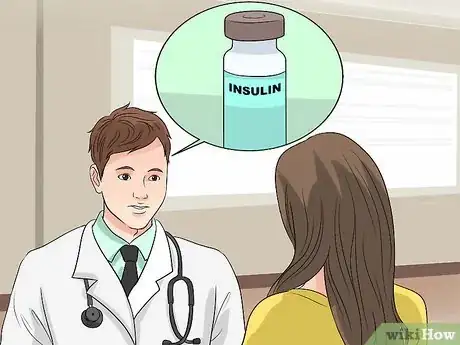
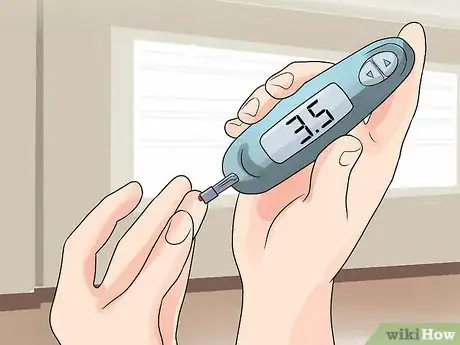





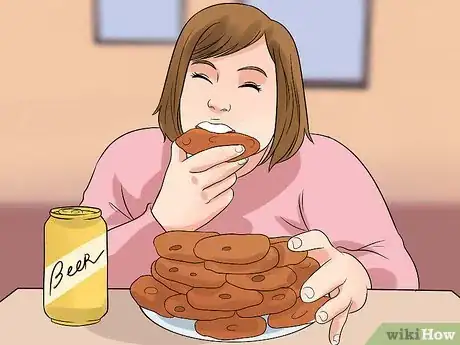


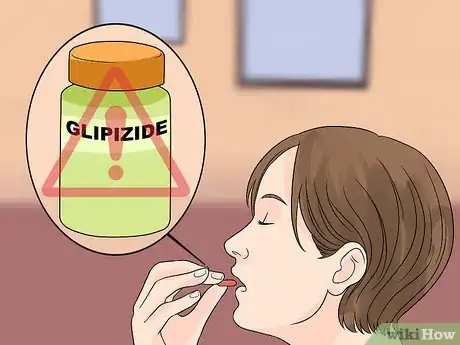


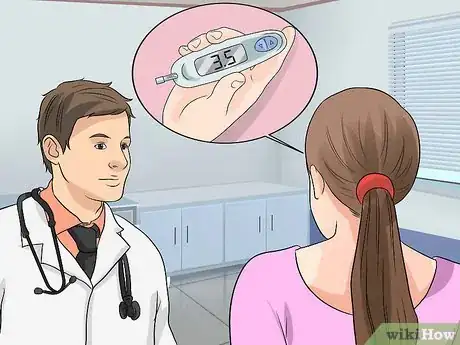
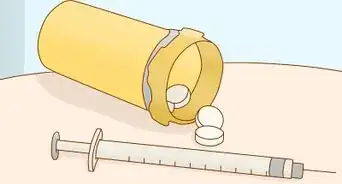
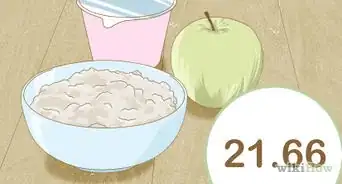
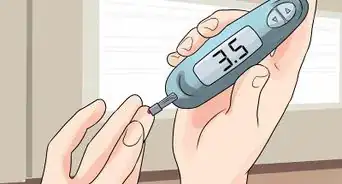



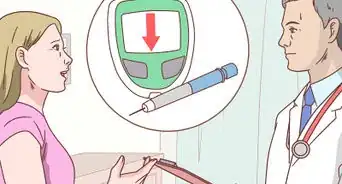


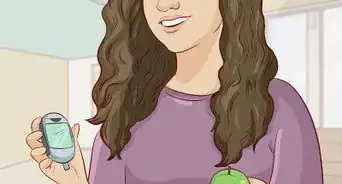











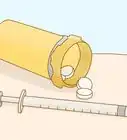

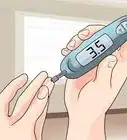




































Medical Disclaimer
The content of this article is not intended to be a substitute for professional medical advice, examination, diagnosis, or treatment. You should always contact your doctor or other qualified healthcare professional before starting, changing, or stopping any kind of health treatment.
Read More...